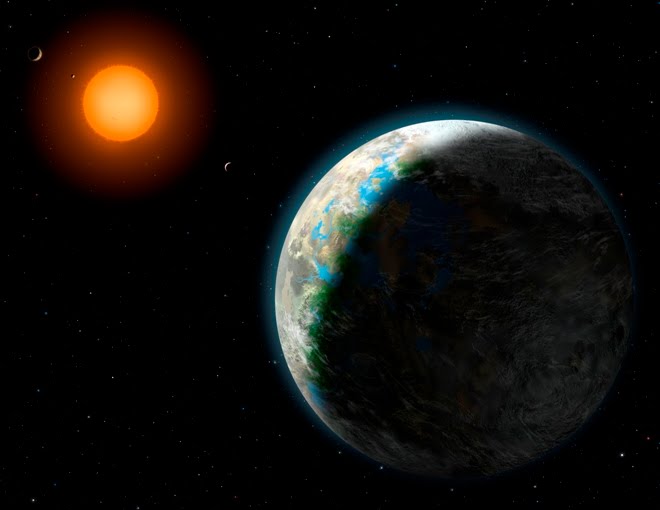If you read the announcement that 68 planets the size of Earth had been discovered, and also that 54 "habitable zone" planets had been found, you were probably wondering how many were BOTH similar in size to Earth and in a habitable or Goldilocks (not too hot, not too cold) orbit.
Here's the answer, courtesy of SpaceDaily.com:
"We went from zero to 68 Earth-sized planet candidates and zero to 54 candidates in the habitable zone - a region where liquid water could exist on a planet's surface. Some candidates could even have moons with liquid water," said William Borucki of NASA's Ames Research Center, Moffett Field, Calif., and the Kepler Mission's science principal investigator.
"Five of the planetary candidates are both near Earth-size and orbit in the habitable zone of their parent stars."
The remaining 49 habitable zone candidates range from super-Earth size - up to twice the size of Earth - to larger than Jupiter. The findings are based on the results of observations conducted May 12 to Sept. 17, 2009 of more than 156,000 stars in Kepler's field of view, which covers approximately 1/400 of the sky.
"The fact that we've found so many planet candidates in such a tiny fraction of the sky suggests there are countless planets orbiting stars like our sun in our galaxy," said Borucki.
Full SpaceDaily.com article on NASA'a Kepler discoveries, by by Michael Mewhinney and Rachel Hoover
Astronomy blog with news on Gliese 581g, Exoplanets, 2012 Transit of Venus, Zarmina's World, exoplanetary exploration, Extreme Supermoons, Kepler telescope, 2012 astronomy, Maya prophecies, links to astronomy websites, 2012 Transit of Venus, 21st century architecture, astronomers, solar energy, astronomical news.
Is There LIFE on Planet GJ581g?
GJ 581 g is an Earth-like planet recently discovered orbiting Gliese 581, a red dwarf star categorized as M Dwarf. This new discovery is perceived by scientists as as a Goldilocks type sphere - not too hot, not too cold. Nicknamed Zarminas World (after his wife Zarmina) by project leader Steven S Vogt, GJ581g will fascinate and enthrall Earthlings for generations to come.
GJ581G Orbiting Gliese 581

Earth Has A Twin
Solar Powered System

Astronomy News Info Photos Telescopes
Chitika Network Links
Astronomy For Everyone
Green Mutual Fund Investing Info
Popular Posts
-
BEIJING -- China plans to launch space labs and manned ships and prepare to build space stations over the next five years, according to a pl...
-
To me it seems likely that the Transit of Venus in 2012 is the most obvious reason the Mayan priests would define 2012 as the end of one er...
-
Meteor shower to be obscured by daylight, full moon CAPE CANAVERAL, Fla. -- Heads-up, meteor fans. As many as 750 meteors an hour are expect...
-
Here are some of the most recent Mars images released by NASA, taken from the Curiosity rover in recent days: Check b...
-
Sustainable Tourism: A Key to Global Solutions by Dr. Reese Halter and Dr. Dave Randle When most people think of tourism, they probably don...
astronomycentral.co.uk
Best Green Stocks Investing Blog
NASA Watch
Subscribe to:
Post Comments (Atom)
GJ581g Zarminas World Info and Links
Search Green Stocks Investing Network

Custom Search



No comments:
Post a Comment